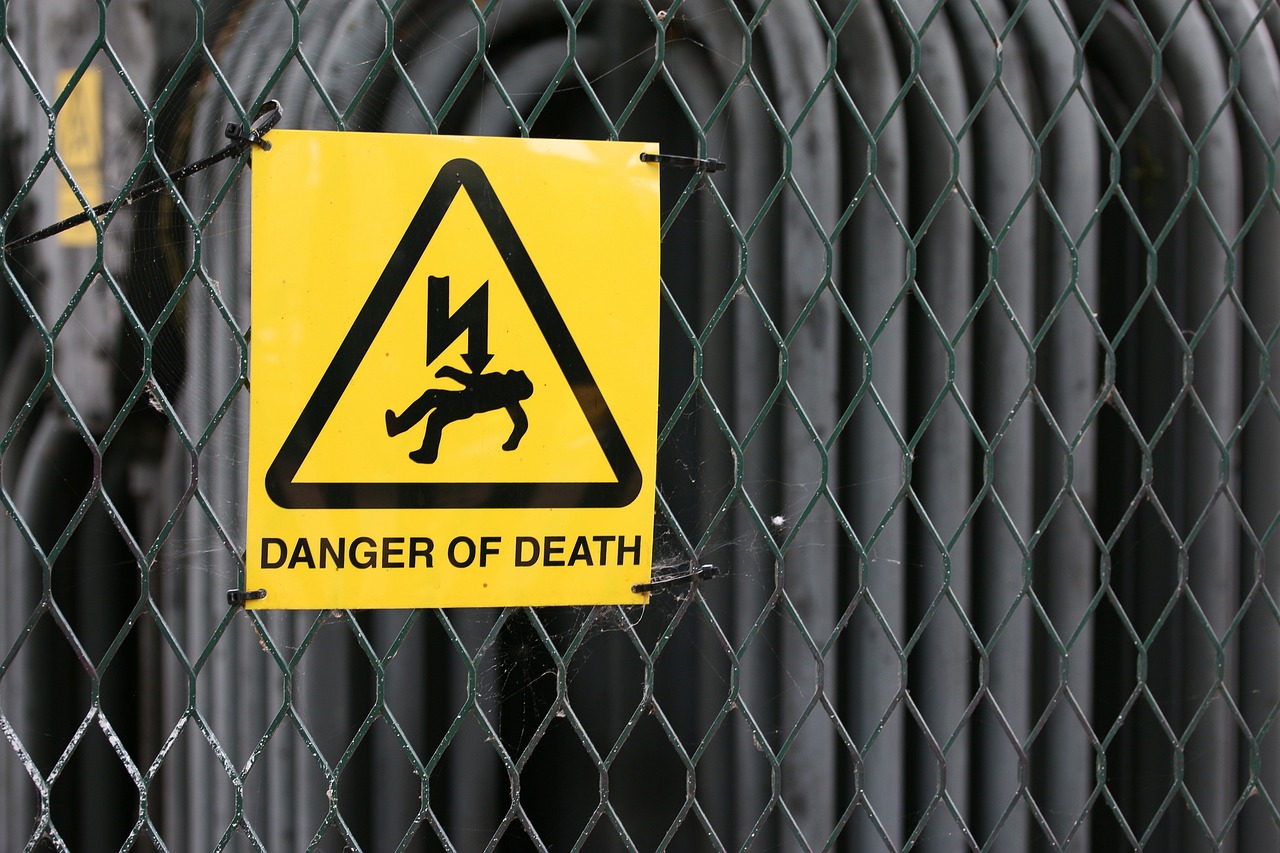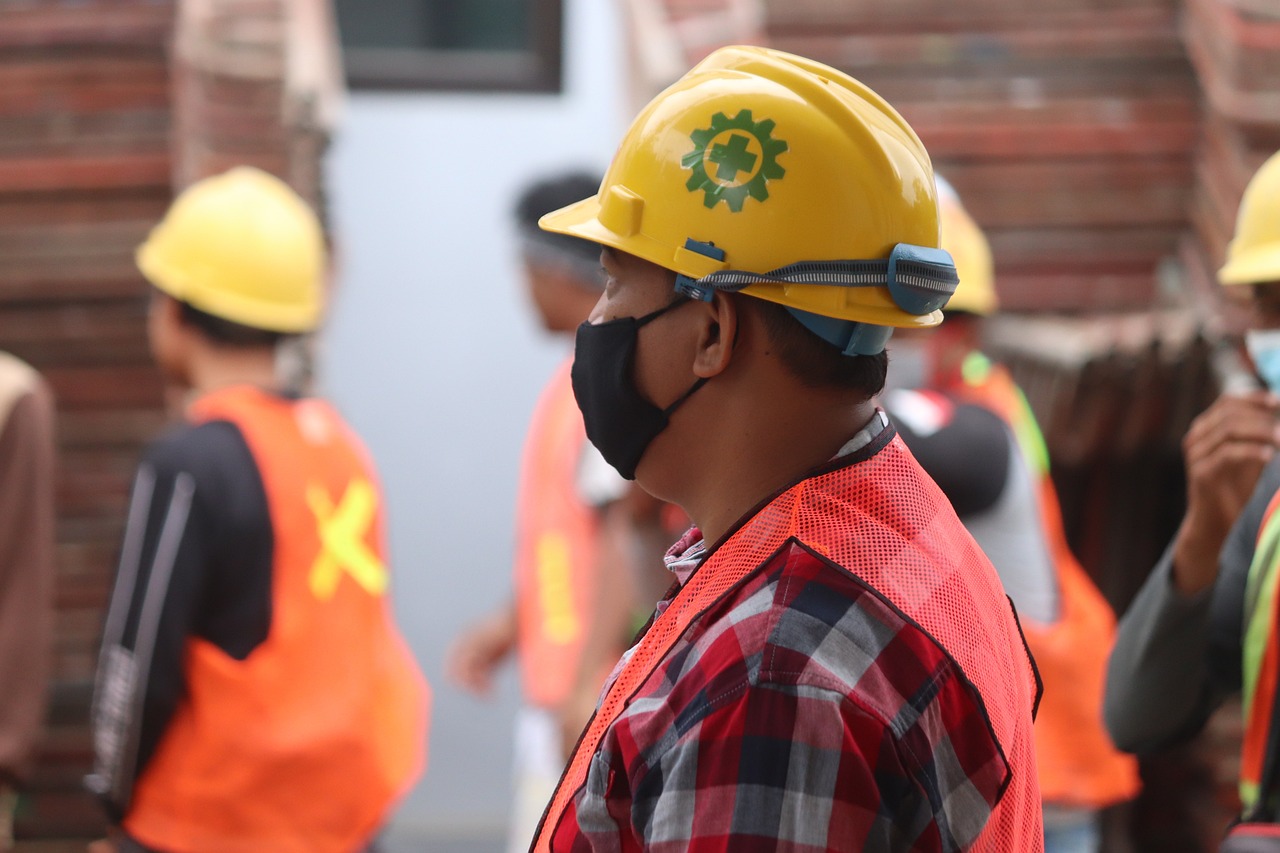Human Behavior - A Key Determinant in Safety Procedures
When we think about safety procedures, our minds might jump straight to the protocols, the rules, and the equipment designed to keep us safe. However, there’s an underlying force that shapes these procedures more than any manual or checklist ever could: human behavior. Understanding how people act, react, and make decisions in various environments is crucial for developing effective safety protocols. After all, no safety procedure can succeed without the human element playing its part. So, what really drives our actions when it comes to safety?
Imagine you’re in a workplace where safety is prioritized. You see signs everywhere, hear reminders in meetings, and yet, accidents still happen. Why? It often boils down to psychological factors that influence our decisions. Cognitive biases—like overconfidence or the illusion of control—can lead individuals to underestimate risks. Emotions, too, play a pivotal role; fear can paralyze, while a sense of invulnerability can encourage reckless behavior. In essence, the way we perceive risk shapes our actions, and that’s a critical aspect of safety that needs to be addressed.
To illustrate, consider a scenario where a worker is tasked with operating heavy machinery. If they have a strong belief in their skills and a history of successful operation, they might neglect safety checks, thinking, “It won’t happen to me.” This mindset can lead to dangerous situations. Thus, understanding these psychological underpinnings is essential for crafting safety procedures that resonate with employees and encourage responsible behavior.
Furthermore, training is another significant factor that influences safety behavior. It’s not just about providing information; it’s about how that information is conveyed and absorbed. Different training methodologies can significantly enhance safety awareness and compliance among employees. For instance, hands-on training tends to be more effective than traditional lecture-style sessions. Engaging employees through interactive sessions can help them internalize safety protocols better, leading to a more profound commitment to safe practices.
In addition to training, the implementation of behavioral safety programs can have a transformative impact on workplace safety culture. These programs focus on observing behaviors and modifying unsafe practices. By actively monitoring and providing feedback on safety behaviors, organizations can foster an environment where safety becomes a shared responsibility. Employees are more likely to adhere to safety protocols when they see their peers doing the same, creating a ripple effect of positive behavior.
Moreover, feedback mechanisms are crucial for reinforcing safe behaviors. Constructive feedback can lead to improved adherence to safety protocols. When employees receive regular feedback on their safety practices, they are more likely to recognize areas for improvement and take action. This continuous loop of feedback not only enhances individual performance but also contributes to a culture of safety where everyone feels accountable.
Another effective strategy is the use of incentive structures. Motivating employees to prioritize safety can be achieved through various incentive strategies. For example, recognizing and rewarding safe behavior can encourage others to follow suit. This could be through bonuses, public acknowledgment, or even simple verbal praise. When employees feel their efforts are appreciated, they are more likely to remain vigilant about safety practices.
Leadership also plays a critical role in shaping an organization’s safety culture. Leaders who prioritize safety through their actions and communication can significantly influence employee behavior and commitment. When leaders model safe practices and openly discuss the importance of safety, it fosters an environment where employees feel empowered to speak up about safety concerns. Effective leadership is about more than just enforcing rules; it’s about inspiring a collective commitment to safety.
Lastly, let’s not overlook the social influences on safety behavior. The dynamics within teams can heavily impact individual safety practices. Peer pressure and group norms often dictate what is considered acceptable behavior. If a team has a strong culture of safety, individuals are more likely to conform to those standards. Conversely, if unsafe practices are normalized, it can lead to a decline in overall safety compliance.
In conclusion, human behavior is a pivotal determinant in the effectiveness of safety procedures. By understanding the psychological factors that influence decision-making, implementing effective training and feedback mechanisms, establishing incentive structures, and fostering strong leadership, organizations can create a culture where safety is a shared priority. In this way, we can reduce risks and ensure a safer environment for everyone.
- What is the role of human behavior in safety procedures?
Human behavior significantly influences the effectiveness of safety procedures. Understanding how individuals perceive risk and make decisions is crucial for developing protocols that resonate with employees. - How can training improve safety awareness?
Training methodologies that engage employees actively, such as hands-on training, are more effective in enhancing safety awareness and compliance. - What are behavioral safety programs?
Behavioral safety programs focus on observing and modifying unsafe behaviors, fostering a culture of safety within organizations. - How does leadership affect safety culture?
Leaders who prioritize safety through their actions and communication can significantly influence employee behavior and commitment to safety. - Why are feedback mechanisms important?
Feedback mechanisms reinforce safe behaviors and help employees recognize areas for improvement, contributing to a culture of safety.

The Psychology of Risk Perception
Understanding how individuals perceive risk is crucial when it comes to developing effective safety procedures. It's fascinating to realize that our perception of risk is often influenced by a myriad of psychological factors. These factors can lead us to make decisions that may not always align with reality. For instance, cognitive biases, which are systematic patterns of deviation from norm or rationality in judgment, play a significant role in how we assess risk. Have you ever noticed how people tend to overestimate the likelihood of dramatic events, like plane crashes, while underestimating everyday risks, such as driving? This is a classic example of the availability heuristic, where individuals rely on immediate examples that come to mind when evaluating a specific topic, concept, method, or decision.
Moreover, emotions can heavily influence our risk assessment. Fear, for example, can lead to an exaggerated perception of risk, causing individuals to avoid certain situations altogether. On the flip side, overconfidence can lead to risky behaviors, as people may underestimate potential dangers. This emotional rollercoaster complicates the decision-making process, making it essential for safety protocols to account for these psychological nuances.
To illustrate, consider the following factors that shape risk perception:
- Personal Experience: Past experiences can significantly color our perception of risk. Someone who has been in a car accident may be more cautious while driving.
- Social Influence: The opinions and behaviors of peers can alter how we perceive risks. If everyone in your circle engages in risky behavior, you might feel pressured to do the same.
- Media Influence: The portrayal of risks in media can skew our understanding. Sensationalized news stories can make certain risks seem more prevalent than they are.
Understanding these psychological factors is not just an academic exercise; it's a necessary step in crafting safety protocols that resonate with real human behavior. By acknowledging the emotional and cognitive biases that individuals bring to the table, organizations can create more effective training programs and safety measures. For instance, incorporating elements that address these biases into safety training can significantly enhance compliance and awareness among employees.
In summary, the psychology of risk perception is a complex interplay of cognitive biases and emotional influences. By grasping these concepts, organizations can better tailor their safety procedures to align with how people actually think and feel about risk, ultimately leading to a safer environment for everyone.

Influence of Training on Behavior
Training is not just a checkbox on a compliance list; it's a powerful tool that shapes the very fabric of workplace behavior. Imagine walking into a room filled with employees, each equipped with the knowledge and skills to not only perform their tasks but to do so safely. This is the transformative power of effective training. It goes beyond mere instruction; it fosters a culture where safety becomes second nature. When employees are trained properly, they become more aware of their surroundings and the potential risks involved in their work. This heightened awareness leads to better decision-making and a greater commitment to adhering to safety protocols.
One of the most significant aspects of training is its ability to address cognitive biases that can cloud judgment. For instance, many individuals tend to underestimate risks, believing that accidents happen to others but not to themselves. Through comprehensive training, employees can learn to recognize these biases and adjust their behaviors accordingly. This is where the integration of real-life scenarios into training programs becomes invaluable. By simulating potential hazards, employees can experience the consequences of unsafe behaviors in a controlled environment, making the lessons learned far more impactful.
Moreover, the style of training delivery can significantly influence its effectiveness. Traditional classroom settings may not always engage employees fully. Instead, incorporating interactive elements such as workshops, role-playing, and hands-on activities can enhance retention and application of safety practices. For example, a construction company might implement a training program that includes on-site demonstrations of proper equipment handling. This not only reinforces the information but also builds confidence among employees to apply what they've learned in real-world situations.
To illustrate the influence of training methodologies on behavior, consider the following table that summarizes different training approaches and their outcomes:
| Training Method | Description | Expected Outcome |
|---|---|---|
| Classroom Training | Traditional lectures and presentations. | Basic knowledge retention. |
| Hands-On Training | Practical application of skills in real scenarios. | Improved confidence and skill application. |
| Peer-Led Training | Training sessions led by experienced employees. | Enhanced engagement and relatability. |
| Simulation-Based Training | Realistic scenarios to practice responses. | Increased preparedness for actual risks. |
Furthermore, it’s essential to recognize that training should not be a one-time event. Continuous learning and regular refreshers are crucial in maintaining safety standards. Just like a muscle, knowledge needs to be exercised to stay strong. Organizations that prioritize ongoing training create an environment where safety is consistently reinforced. This approach not only keeps safety protocols fresh in employees' minds but also shows a commitment to their well-being, which can lead to higher morale and lower turnover rates.
In conclusion, the influence of training on behavior cannot be overstated. It is the bedrock upon which a culture of safety is built. By understanding how to effectively train employees, organizations can significantly reduce risks and foster an environment where safety is a shared responsibility. When employees feel empowered through training, they are more likely to take ownership of their safety and the safety of their colleagues, ultimately leading to a safer workplace for everyone.
- What is the most effective training method for safety?
While there is no one-size-fits-all answer, hands-on training and simulation-based training often yield the best results as they allow employees to practice skills in realistic scenarios. - How often should safety training be conducted?
Regular refresher courses should be held at least annually, but more frequent training may be necessary depending on the industry and specific risks involved. - Can peer-led training be as effective as traditional training?
Yes, peer-led training can enhance engagement and relatability, making it an effective alternative to traditional methods.

Behavioral Safety Programs
Behavioral safety programs are designed to address the critical link between human behavior and safety in the workplace. By focusing on observing and modifying unsafe behaviors, these programs play a pivotal role in fostering a culture of safety that permeates an organization. Imagine a workplace where every employee is not only aware of safety protocols but actively participates in creating a safer environment. This is the goal of behavioral safety programs, and they can be incredibly effective when implemented correctly.
At the heart of behavioral safety programs is the understanding that most accidents are caused by human error. This insight drives organizations to take a more proactive approach to safety by focusing on behavior modification rather than solely relying on policies and procedures. Employees are encouraged to identify unsafe behaviors—not just their own but also those of their peers. This peer observation creates a sense of accountability and shared responsibility, which can significantly enhance safety compliance.
One of the key components of these programs is the use of observation and feedback. Employees are trained to observe their colleagues and provide constructive feedback on safety practices. This approach not only helps in identifying potentially dangerous behaviors but also promotes open communication among team members. For instance, if an employee notices a co-worker not wearing the proper safety gear, they can gently remind them of the importance of compliance. This kind of interaction fosters a culture where safety is prioritized and everyone feels empowered to speak up.
Moreover, behavioral safety programs often incorporate data collection and analysis. Organizations can track incidents, near misses, and unsafe behaviors over time, allowing them to identify trends and areas for improvement. By analyzing this data, companies can tailor their training programs to address specific issues, ensuring that employees receive the most relevant and effective training possible. For example, if data shows a high incidence of slips and falls in a particular area, targeted training sessions can be organized to address the underlying causes.
Another vital aspect of behavioral safety programs is the implementation of a reward system. Recognizing and rewarding safe behavior can motivate employees to adhere to safety protocols consistently. This could be as simple as acknowledging individuals in team meetings or offering tangible rewards like gift cards or extra time off. When employees see that their safe practices are recognized and valued, it reinforces their commitment to maintaining a safe working environment.
In summary, behavioral safety programs are instrumental in shaping a culture of safety within organizations. By focusing on behavior modification, peer observation, data analysis, and reward systems, these programs not only enhance safety awareness but also foster a sense of community and shared responsibility among employees. As organizations continue to prioritize safety, understanding and implementing effective behavioral safety programs will be essential to reducing workplace accidents and creating a safer environment for all.

Feedback Mechanisms
Feedback mechanisms are essential components of any effective safety program, acting as the backbone that supports and sustains safe behaviors in the workplace. Imagine a well-oiled machine where every part works in harmony; that’s what a robust feedback system does for safety protocols. It not only reinforces safe practices but also identifies areas needing improvement. Constructive feedback provides employees with valuable insights into their behaviors, allowing them to make necessary adjustments. This process is akin to having a personal coach who guides you through your training, helping you refine your technique and improve your performance.
One of the key aspects of effective feedback mechanisms is that they should be timely and specific. When feedback is delivered immediately after an observed behavior, it has a greater impact. For instance, if a worker is seen following safety protocols correctly, acknowledging this behavior right away can reinforce that action. Conversely, if unsafe behavior is observed, addressing it promptly allows for correction before any potential accidents occur. This immediacy builds a culture of safety where employees feel empowered to engage in safe practices consistently.
Moreover, feedback should be framed positively, focusing on what was done well alongside areas for improvement. This balanced approach not only fosters a more open environment but also encourages employees to feel comfortable discussing safety issues. For example, if a worker wears their protective gear correctly but neglects to follow a specific safety procedure, feedback can highlight the positive action while gently guiding them to the necessary correction. This method ensures that employees are not left feeling criticized but rather supported in their journey towards better safety practices.
In addition to direct feedback, implementing systems such as anonymous reporting can significantly enhance safety awareness. Employees may feel more comfortable reporting unsafe conditions or behaviors when they know their identity will remain confidential. This anonymity can uncover hidden risks that might otherwise go unreported, creating a more comprehensive view of safety within the organization. By encouraging open dialogue and providing safe channels for feedback, organizations can cultivate a proactive safety culture.
To illustrate the effectiveness of feedback mechanisms, consider the following table that outlines the differences between traditional feedback methods and modern approaches:
| Traditional Feedback Methods | Modern Feedback Approaches |
|---|---|
| Often delayed and infrequent | Timely and ongoing feedback |
| Focuses primarily on criticism | Balanced feedback highlighting strengths and areas for improvement |
| Limited employee engagement | Encourages employee participation and input |
| Top-down communication | Open dialogue and two-way communication |
In conclusion, effective feedback mechanisms are crucial for reinforcing safe behaviors within organizations. By fostering a culture of open communication, timely feedback, and positive reinforcement, companies can significantly enhance their safety protocols. Just like a gardener nurtures plants to help them grow, organizations must cultivate a supportive environment where employees feel valued and motivated to prioritize safety. This not only protects the workforce but also contributes to overall organizational success.
- What are feedback mechanisms? Feedback mechanisms are systems in place that provide employees with information about their performance, especially regarding safety practices, allowing them to improve and adhere to protocols.
- Why is timely feedback important? Timely feedback helps employees correct unsafe behaviors immediately, reinforcing safe practices and preventing potential accidents.
- How can anonymous reporting enhance safety? Anonymous reporting encourages employees to share concerns without fear of retribution, helping organizations identify and address hidden risks.
- What role does positive reinforcement play in feedback? Positive reinforcement highlights what employees are doing well, which can motivate them to continue safe practices while also addressing areas needing improvement.

Incentive Structures
Incentive structures are a powerful tool in the world of workplace safety, acting as a catalyst for change in employee behavior. When designed thoughtfully, these structures can motivate individuals to prioritize safety over productivity or convenience, creating a culture where safety is not just an obligation but a shared value. Imagine a workplace where every employee feels personally invested in the safety protocols, not because they have to, but because they want to. This transformation can be achieved through well-crafted incentive programs.
There are several types of incentive structures that organizations can implement to encourage safe practices:
- Monetary Rewards: Cash bonuses or gift cards can be effective motivators. Employees who consistently follow safety protocols or demonstrate safe behaviors can be rewarded financially, reinforcing the importance of safety in their daily tasks.
- Recognition Programs: Public acknowledgment of safe behavior can boost morale. Employees who excel in promoting safety can be highlighted in company newsletters or meetings, fostering a sense of pride and encouraging others to follow suit.
- Additional Time Off: Offering extra vacation days or flexible hours as a reward for safety compliance can be a compelling incentive. This not only shows appreciation but also emphasizes the value of maintaining a safe work environment.
However, the effectiveness of these incentive structures hinges on how they are implemented. It's essential to ensure that the criteria for receiving rewards are clear and achievable. If employees perceive the goals as unrealistic or unattainable, motivation can quickly dwindle, leading to disillusionment rather than encouragement. Therefore, it is crucial to involve employees in the development of these programs, ensuring that their feedback is considered and that they feel a sense of ownership over the safety culture.
In addition to the tangible rewards, the psychological impact of incentives should not be underestimated. When employees feel that their safety efforts are recognized and valued, it fosters a positive feedback loop. They are more likely to engage in safe behaviors, knowing that their actions contribute to a collective goal. This sense of community and shared responsibility can be incredibly powerful, transforming how safety is perceived and practiced within the organization.
Moreover, it’s important to regularly review and adjust incentive programs to keep them relevant and engaging. What motivates employees today may not hold the same appeal six months down the line. By continuously evaluating the effectiveness of these structures, organizations can ensure that they remain impactful and aligned with the evolving dynamics of the workplace.
In conclusion, when implemented thoughtfully, incentive structures can significantly enhance safety compliance and foster a culture of safety. By recognizing and rewarding safe behaviors, organizations can not only improve their safety records but also cultivate a more engaged and responsible workforce. The key is to create a system that is transparent, achievable, and aligned with the values of both the employees and the organization.
Q1: What types of incentives are most effective for promoting safety in the workplace?
A1: The effectiveness of incentives can vary by organization, but common successful options include monetary rewards, recognition programs, and additional time off. Tailoring incentives to the preferences of your workforce is crucial.
Q2: How can we ensure that our incentive program is fair and motivating?
A2: Involving employees in the development of the incentive program can help ensure that the goals are perceived as achievable and fair. Regularly reviewing the program and soliciting feedback can also help maintain its effectiveness.
Q3: Can incentives lead to risky behavior if not managed properly?
A3: Yes, if not managed carefully, incentives can inadvertently encourage employees to cut corners. It is vital to establish clear criteria for rewards that emphasize safety over speed or productivity.

Impact of Leadership on Safety Culture
Leadership plays an absolutely crucial role in shaping the safety culture within any organization. When we think about safety, we often envision protocols, checklists, and compliance measures. However, the true essence of a robust safety culture lies in the people who lead these initiatives. Strong leaders not only set the tone for safety practices but also inspire their teams to embrace a culture of safety as a shared value. Imagine a ship sailing smoothly through stormy seas; the captain's confidence and decisions are pivotal in ensuring that the crew feels secure and supported. Similarly, effective leaders guide their organizations through the challenges of maintaining safety standards.
One of the most significant ways leaders influence safety culture is through their communication style. Open and transparent communication fosters trust and encourages employees to voice their concerns without fear of repercussions. When leaders actively listen to their team members and address safety issues promptly, they create an environment where safety becomes a shared responsibility. This is akin to a family dinner where everyone feels comfortable sharing their thoughts; the more open the conversation, the stronger the bonds become. By establishing this level of trust, leaders can significantly enhance the overall safety climate.
Moreover, leaders set the example through their own behaviors. When employees observe their leaders prioritizing safety—wearing protective equipment, adhering to protocols, and participating in safety training—they are more likely to follow suit. This principle can be likened to the concept of "walking the talk." If leaders demonstrate a genuine commitment to safety, it sends a powerful message throughout the organization. Employees are more inclined to adopt safe practices when they see their leaders actively engaged in promoting them.
Another essential aspect is the role of accountability. Leaders must not only hold themselves accountable for safety but also ensure that their teams understand the importance of accountability in their roles. This can be achieved through regular safety meetings, performance reviews, and recognition of safe practices. For instance, a table summarizing key leadership actions that enhance safety culture might look like this:
| Leadership Action | Impact on Safety Culture |
|---|---|
| Open Communication | Builds trust and encourages reporting of safety concerns |
| Leading by Example | Inspires employees to adopt safe practices |
| Accountability | Promotes responsibility for safety at all levels |
| Recognizing Safe Behavior | Motivates employees to prioritize safety |
Furthermore, leaders must also cultivate an environment where learning from incidents is encouraged rather than punished. When accidents occur, instead of assigning blame, effective leaders focus on understanding the root causes and implementing preventive measures. This approach not only improves safety practices but also empowers employees to contribute to safety solutions. Think of it as a laboratory where experiments are conducted; failures are seen as opportunities for learning, leading to innovative safety solutions.
In conclusion, the impact of leadership on safety culture cannot be overstated. By fostering open communication, leading by example, promoting accountability, and encouraging a learning environment, leaders can significantly enhance safety practices within their organizations. Just as a gardener nurtures their plants to grow strong and healthy, effective leaders cultivate a safety culture that flourishes, ultimately leading to a safer workplace for everyone.
- What is the role of leadership in safety culture? Leadership sets the tone for safety practices and inspires employees to prioritize safety as a shared value.
- How can leaders improve communication regarding safety? Leaders can enhance communication by being open, transparent, and actively listening to employee concerns.
- Why is accountability important in safety culture? Accountability ensures that everyone understands their role in maintaining safety and encourages responsible behavior.
- How can leaders promote a learning environment after an incident? By focusing on understanding the root causes of incidents rather than assigning blame, leaders encourage a culture of continuous improvement.

Social Influences on Safety Behavior
When we talk about safety in the workplace, it’s not just about the protocols and procedures; it’s also about the people who follow them. Social dynamics play a crucial role in shaping individual safety behaviors. Think about it: have you ever noticed how the actions of your peers can influence your own decisions? Whether it’s a subtle nod of approval or a disapproving glance, our social environment can significantly impact how we perceive and execute safety measures. This phenomenon is often driven by peer pressure and the prevailing group norms that dictate what is considered acceptable behavior.
Consider a scenario where a team is working at a construction site. If one worker neglects to wear their hard hat and others see this without any repercussions, it can quickly lead to a culture where safety gear becomes optional rather than mandatory. The psychological concept of conformity kicks in, where individuals often do what they see others doing, even if they know it’s not the right choice. This is why fostering a strong safety culture within teams is so essential—when everyone is on board, the likelihood of unsafe behaviors decreases dramatically.
Moreover, the influence of social dynamics extends beyond mere observation. It’s also about communication. Effective communication among team members can enhance safety awareness and compliance. For instance, if someone notices a potential hazard, the way they communicate this concern can either encourage or discourage others from taking it seriously. Open dialogues about safety can create an environment where everyone feels responsible for their own safety and that of their teammates.
To further illustrate this point, let’s look at a few key social factors that influence safety behavior in the workplace:
- Peer Pressure: The desire to fit in can lead individuals to overlook safety protocols.
- Group Norms: Established norms within a team can dictate acceptable safety practices.
- Communication Styles: How safety messages are conveyed can impact their effectiveness.
- Team Cohesion: A strong bond among team members can lead to enhanced compliance with safety measures.
In high-risk environments, the importance of team cohesion cannot be overstated. When team members trust and support each other, they are more likely to adhere to safety protocols. This sense of belonging can act as a protective factor, encouraging individuals to speak up about unsafe practices and fostering a collective commitment to safety. It’s like a safety net; when everyone is looking out for one another, the entire team becomes more resilient against potential hazards.
In conclusion, understanding the social influences on safety behavior is essential for creating effective safety protocols. By recognizing the impact of peer dynamics, communication, and team cohesion, organizations can implement strategies that not only promote safety but also cultivate a culture of accountability and support. After all, safety isn’t just an individual responsibility; it’s a team effort that thrives on positive social interactions and strong relationships.
Q: How does peer pressure affect safety behavior?
A: Peer pressure can lead individuals to conform to unsafe practices if they see others neglecting safety protocols without consequences.
Q: What role does communication play in safety awareness?
A: Effective communication fosters an open environment where team members feel comfortable discussing safety concerns, which enhances overall safety compliance.
Q: Why is team cohesion important for safety?
A: Strong team cohesion encourages individuals to look out for each other, leading to a collective commitment to maintaining safety standards.

Team Cohesion and Safety
When we think about safety in the workplace, it's easy to get caught up in the technicalities of protocols, equipment, and regulations. However, one of the most crucial yet often overlooked aspects is team cohesion. Imagine a well-oiled machine where every part works harmoniously; that’s what a cohesive team looks like. Strong team dynamics can significantly enhance safety compliance, making it an essential factor in high-risk environments. When team members trust and support one another, they are more likely to communicate openly about potential hazards, report unsafe conditions, and adhere to safety protocols.
But why is team cohesion so vital? For starters, it fosters an environment where individuals feel comfortable sharing their concerns. When employees are part of a supportive team, they are more likely to speak up about unsafe practices or conditions without the fear of being ridiculed or ignored. This open communication is the bedrock of a proactive safety culture, where issues are addressed before they escalate into serious incidents.
Moreover, cohesive teams tend to have a shared understanding of safety practices. They develop a collective responsibility towards maintaining a safe working environment. When everyone is on the same page, it’s easier to implement and enforce safety protocols. This shared responsibility can be illustrated by the following points:
- Increased Accountability: Team members hold each other accountable for following safety procedures.
- Shared Learning: Teams can learn from each other’s experiences, improving overall safety awareness.
- Enhanced Support: Colleagues can offer help and guidance to those who may struggle with safety compliance.
In high-risk settings, such as construction sites or manufacturing plants, the stakes are even higher. Here, a cohesive team can mean the difference between a safe day at work and a catastrophic accident. Teams that engage in regular safety drills together not only practice their skills but also strengthen their bonds. These drills can serve as both a training exercise and a team-building activity, reinforcing the idea that safety is a shared priority.
Furthermore, leaders play a pivotal role in fostering team cohesion. By promoting a culture of trust and respect, leaders can encourage their teams to prioritize safety. When team members see their leaders actively participating in safety initiatives, they are more likely to follow suit. This leadership involvement can be demonstrated through:
| Leadership Actions | Impact on Team Cohesion |
|---|---|
| Participating in safety training | Builds trust and respect |
| Recognizing safe behaviors | Encourages accountability |
| Facilitating open discussions about safety | Promotes transparency |
In conclusion, team cohesion is not just a buzzword; it’s a fundamental element of workplace safety. By fostering strong relationships among team members, organizations can create a culture where safety is a shared value. When teams work together seamlessly, they not only enhance their safety compliance but also contribute to a more positive and productive work environment.
Q1: How can I improve team cohesion in my workplace?
A1: You can improve team cohesion by organizing team-building activities, encouraging open communication, and recognizing individual contributions to the team's success.
Q2: What role does leadership play in fostering team cohesion?
A2: Leadership plays a crucial role by modeling desired behaviors, promoting a culture of safety, and actively engaging with team members to build trust and respect.
Q3: Are there specific activities that can enhance team safety awareness?
A3: Yes, activities such as safety drills, workshops, and open forums for discussing safety concerns can significantly enhance team safety awareness and cohesion.

Communication and Safety Awareness
Effective communication is the backbone of any successful safety program. It’s not just about relaying information; it’s about creating an environment where safety is a shared responsibility. Think of communication as the oil that keeps the machinery of safety running smoothly. Without it, the gears grind to a halt, leading to misunderstandings, accidents, and a culture that undervalues safety.
When we talk about communication in the context of safety, we’re referring to a variety of channels and methods. For instance, verbal communication during safety meetings, written protocols posted in common areas, and even digital platforms that keep everyone informed about safety updates are all crucial. Each of these methods plays a unique role in fostering safety awareness among employees.
One of the most effective ways to enhance safety communication is through regular training sessions. These sessions should not only cover safety protocols but also encourage open dialogue. Employees should feel comfortable asking questions and expressing concerns. A culture of openness can significantly reduce the likelihood of accidents. Imagine a workplace where every team member feels empowered to speak up about potential hazards—this is the kind of environment that leads to higher safety compliance.
Moreover, feedback is essential in the communication loop. Constructive feedback helps individuals understand how their actions impact safety. For example, if a team member notices unsafe behavior, they should be encouraged to address it directly and positively. This not only corrects the behavior but also reinforces the idea that safety is a collective responsibility. When feedback is delivered effectively, it can create a ripple effect, encouraging others to follow suit.
To illustrate the importance of communication in safety awareness, let’s take a look at a simple table that outlines key communication methods and their benefits:
| Communication Method | Benefits |
|---|---|
| Verbal Communication | Encourages immediate feedback and clarification of safety protocols. |
| Written Protocols | Provides a clear reference for safety procedures that can be reviewed at any time. |
| Digital Platforms | Facilitates real-time updates and information sharing across the organization. |
| Safety Meetings | Fosters team cohesion and collective responsibility for safety. |
In addition to these methods, utilizing visual aids such as infographics and safety posters can significantly enhance understanding and retention of safety information. Visual communication can often bridge the gap where verbal or written communication may fall short. It’s like the saying goes, “A picture is worth a thousand words.” In the realm of safety, this couldn’t be more true.
Ultimately, safety awareness is not just about knowing the rules; it’s about cultivating a culture where everyone is engaged and committed to maintaining a safe work environment. This requires ongoing effort, consistent communication, and a willingness to adapt and improve. By prioritizing effective communication, organizations can significantly enhance their safety protocols and ensure that every team member is not just aware of safety measures but actively participates in upholding them.
- Why is communication important for safety awareness?
Effective communication ensures that all team members understand safety protocols, feel comfortable reporting hazards, and are aware of their responsibilities in maintaining a safe environment. - What are some effective communication methods for safety?
Methods include verbal communication in meetings, written safety protocols, digital platforms for updates, and visual aids like infographics. - How can feedback improve safety practices?
Constructive feedback helps individuals recognize unsafe behaviors and reinforces a culture of safety, encouraging others to follow suit.
Frequently Asked Questions
- What is the role of human behavior in safety procedures?
Human behavior is a crucial factor in the effectiveness of safety procedures. Understanding how individuals make decisions and assess risks helps organizations develop protocols that align with psychological tendencies, ultimately enhancing safety compliance and reducing accidents.
- How does risk perception influence safety practices?
Risk perception significantly affects how individuals respond to safety protocols. Cognitive biases, such as overconfidence or the illusion of control, can lead to underestimating risks. By addressing these biases through training and awareness, organizations can improve safety practices.
- Why is training important for enhancing safety awareness?
Training is essential because it equips employees with the knowledge and skills to recognize hazards and respond appropriately. Different methodologies, such as hands-on training and simulations, can reinforce safe behaviors and ensure that employees are prepared for real-life situations.
- What are behavioral safety programs?
Behavioral safety programs focus on observing and modifying unsafe behaviors within the workplace. These programs aim to create a culture of safety by encouraging employees to engage in safe practices and providing feedback on their actions.
- How do feedback mechanisms improve safety compliance?
Feedback mechanisms provide employees with constructive insights into their behaviors, helping them understand what they are doing well and where they can improve. Regular feedback fosters a culture of continuous improvement, leading to better adherence to safety protocols.
- What types of incentive structures can motivate safe behavior?
Incentive structures can range from financial bonuses to recognition programs. By rewarding employees for safe practices, organizations can create a motivating environment that encourages everyone to prioritize safety in their daily tasks.
- How does leadership impact an organization's safety culture?
Leadership plays a pivotal role in shaping safety culture. Leaders set the tone for safety through their actions, communication, and commitment. When leaders prioritize safety, it influences employees to adopt similar attitudes and behaviors.
- What social influences affect safety behavior?
Social dynamics, such as peer pressure and group norms, can significantly impact individual safety behaviors. When team members support each other in following safety protocols, it creates a collective responsibility that enhances overall safety.
- How does team cohesion relate to safety compliance?
Strong team cohesion fosters trust and communication among team members, which can lead to higher safety compliance. When teams work well together, they are more likely to look out for one another and adhere to safety procedures.
- What strategies can improve communication for safety awareness?
Effective communication strategies include regular safety meetings, open-door policies for discussing safety concerns, and utilizing technology for real-time updates. Clear communication helps ensure everyone is informed and engaged in maintaining a safe work environment.



















